hankyoreh
Links to other country sites 다른 나라 사이트 링크
Understanding the menacing names of N. Korean weapons, and what they tell us
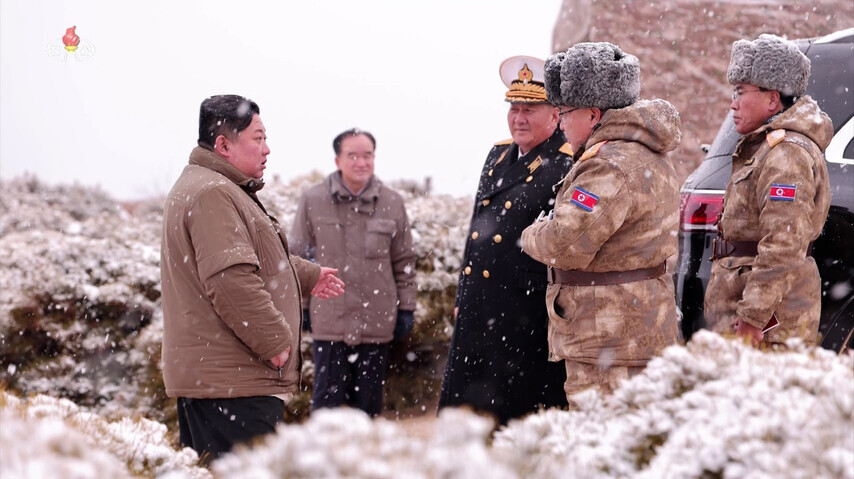
Since its leader Kim Jong-un’s remarks late last year characterizing inter-Korean relations as those between “two states hostile to each other” and “two belligerent states,” North Korea has embarked on a series of shows of military force, with coastal artillery fire over the West Sea on Jan. 5–7, a hypersonic ballistic missile launch on Jan. 14, testing of the tactical weapon-equipped Haeil nuclear torpedo on Jan. 19, and test launches of the Pulhwasal-3-31 and Hwasal-2 cruise missiles on Jan. 24, 28, and 30.
Who gave these North Korean nuclear weapons names like “Haeil” and “Pulhwasal,” and what was the intent behind them?
The truth is that we don’t actually know. North Korea has never given any formal explanation of the standards used when naming weapons that are under development or in deployment.
But if we infer characteristics of these weapons systems from the concise, clear names that Pyongyang has given them, including Haeil (literally “tidal wave” or “tsunami”), Hwasal (“arrow”), and Pulhwasal (“fire arrow”), we can glean some sense of why they were assigned.
A review of North Korea’s weapon names gives the clear sense that it wants to emphasize its “brand” as a nuclear power.
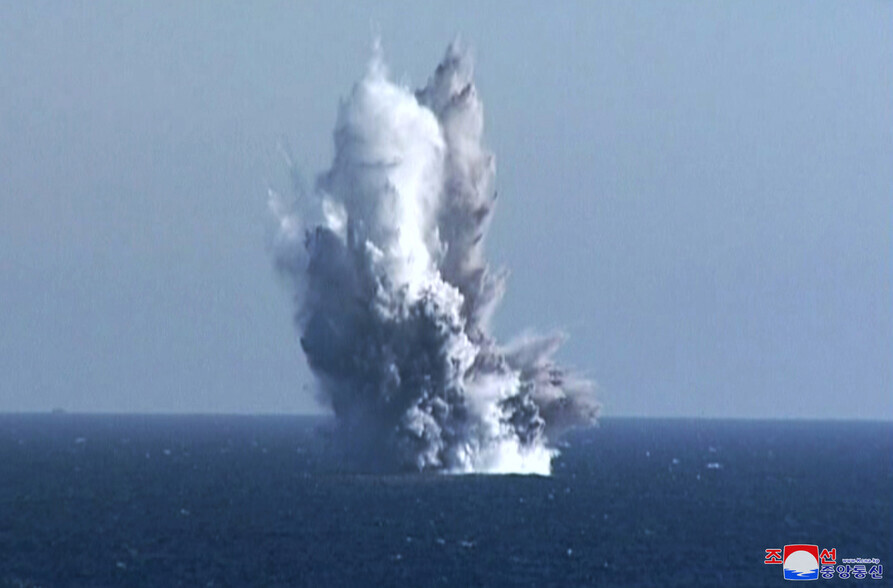
“Tsunami” or “swell”?
In 2012, North Korea embarked on an 11-year development process for an underwater nuclear attack drone that it dubbed the “Haeil.” It described the mission of its weapon as being “to stealthily infiltrate into operational waters and make a super-scale radioactive tsunami through underwater explosion to destroy naval striker groups and major operational ports of the enemy.”
The “Haeil” name captures the intention of wiping out the South Korean Navy’s operational bases and warships, much like an enormous tsunami sweeping onto land.
But South Korean and US intelligence authorities have concluded that North Korea’s claims about the Haeil’s capabilities have been exaggerated or distorted.
Their analysis is that the completed Haeil is not likely to have the explosive force needed to generate a “radioactive tsunami,” and that all it would really be capable of doing is drenching targets with radioactively contaminated seawater. In short, the weapon is less a “tsunami” than a “swell.”
They have also speculated that this larger style of torpedo with a small nuclear warhead attached would be slow-moving and only operable in a limited operational radius, making it less effective militarily and vulnerable to attacks by South Korean and US anti-submarine units.
The conclusion that South Korea and the US have arrived at is that the “Haeil” name is meant to carry a more forceful meaning than the weapon’s actual might, thus achieving a political effect in terms of shoring up the North’s national brand as a “nuclear power.”
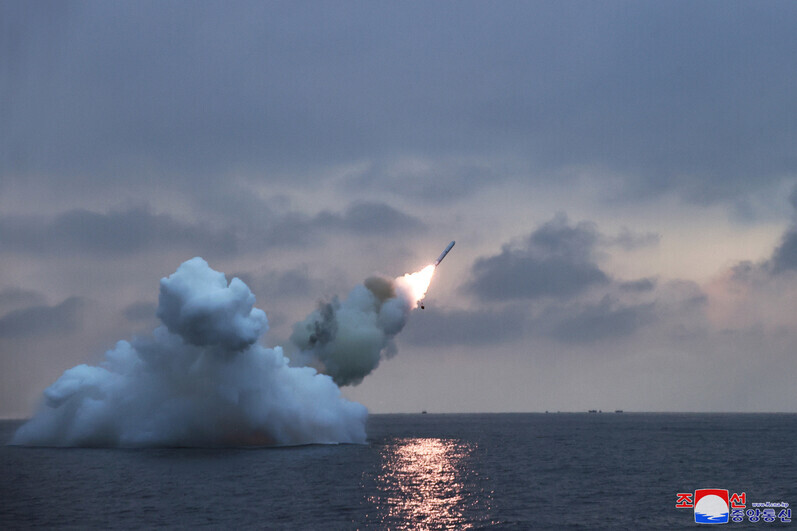
Arrows, fire arrows, and tomahawks
Jan. 24: “Missile Administration of the DPRK conducted the first test-fire of the new-type strategic cruise missile ‘Pulhwasal-3-31’”
Jan. 28: “Kim Jong Un guided the test-fire of the newly-developed submarine-launched strategic cruise missile ‘Pulhwasal-3-31’”
Jan. 30: “Korean People's Army staged a drill of launching strategic cruise missile ‘Hwasal-2’”
The “Pulhwasal” and “Hwasal” projectiles that the North has test-launched are both cruise missiles. Pyongyang has stated that the Hwasal-2 is capable of carrying the Hwasan-31 tactical nuclear warhead.
Cruise missiles are capable of low-altitude flight, altering their height with the terrain. They are also able to conduct precision strikes on key targets, including command sites and military facilities.
North Korea appears to have given “Hwasal” names to its cruise missiles to emphasize their ability to conduct precision strikes much like (fire) arrows finding their target.
The renowned US cruise missile known as the Tomahawk took its name from the battle axes used by indigenous Americans. The naming drew parallels between the missiles’ precision strike capabilities and the sharp blades of the axes, as well as their ability to hit targets accurately when tossed during combat.
Both North Korea’s “Hwasal” and the US’ “Tomahawk” are names that emphasize the nature of cruise missiles and powerful and precise weapons.
South Korea’s cruise missile is known as the Hyunmoo-III. The South Korean military has a Hyunmoo series of missiles, with “Hyunmoo” attached to its mainstay projectiles. The series includes the Hyunmoo-I, Hyunmoo-II, and Hyunmoo-IV ballistic missiles and the Hyunmoo-III cruise missile.
The name Hyunmoo is taken from the mythological figure of the Black Tortoise, the “guardian of the northern sky.” It expresses the idea of keeping the South safe from North Korea and other threats.
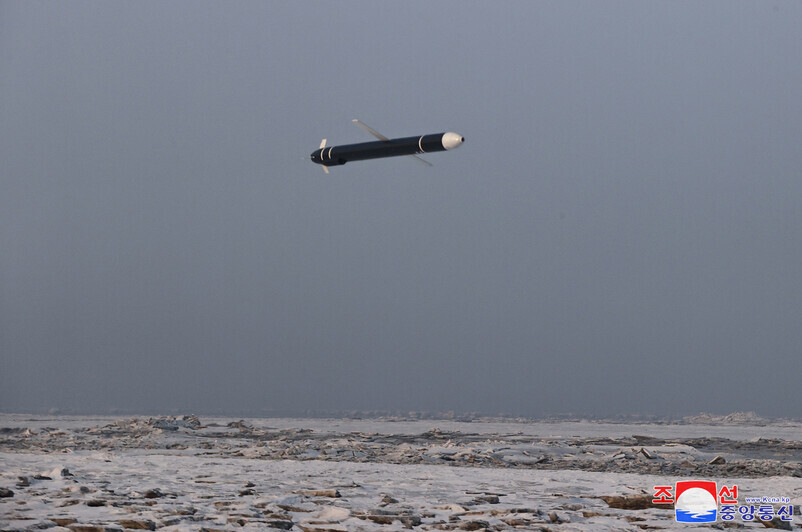
One weapon, two different names?
After North Korea conducted a ballistic missile launch on Jan. 17, 2022, South Korean news outlets reported that this was its first launch of the KN-24 — the North Korean version of ATACMS — in 22 months. South Korea and the US dubbed it the “North Korean version of ATACMS” because its characteristics resembled those of the US tactical surface-to-surface missile.
The “KN-24” was given in accordance with South Korean and US military authorities’ classification procedures. “KN” represents the inverted initials of “North Korea,” while the number after it represents the order in which it was learned about by South Korean and US military authorities.
So “KN-24” means it was the 24th North Korean missile that they had found out about. In January 2022, North Korean government-run media simply reported the launch of a “tactical guided missile.”
In many cases, the names given by other countries have entered more common usage than the names given by the countries that actually produced them. This has to do with the practice of most countries declining to give the actual name of missiles in the development stages or actual key use, due to reasons of military secrecy.
An excellent example of this is the Scud missile, which was first produced by the Soviet Union during the Cold War era and is still being used in conflicts around the world. The Soviets who made the Scud actually named it the “R11.”
The missile itself was developed during the 1950s, but its existence was not known to the West early on. After it was discovered by Western intelligence organizations in the early 1960s, they gave it the “Scud” name.
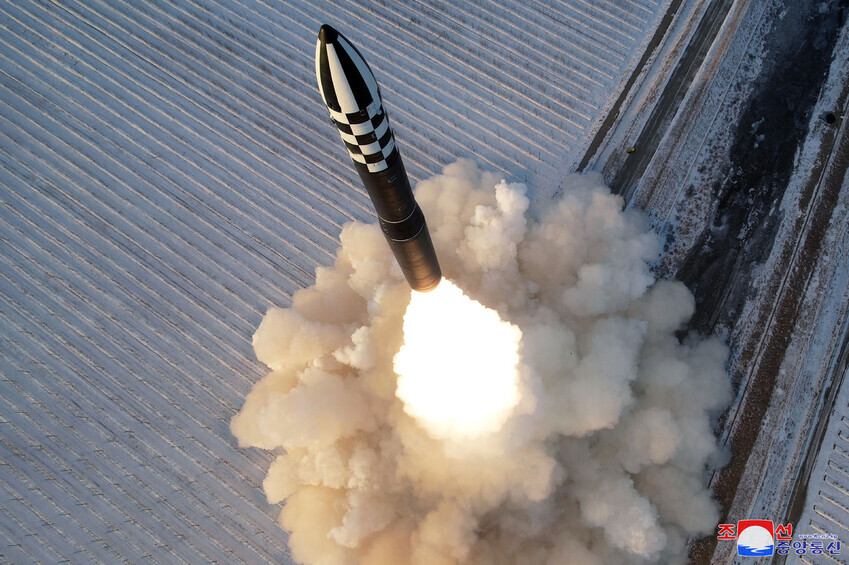
In May 1990, South Korean and US intelligence officials learned about a medium-range ballistic missile in the village of Rodong (Nodong) in the Hamju County of North Korea’s South Hamgyong Province. They called it the “Nodong missile,” after the village where it was first discovered.
“Nodong” is also the Korean word for “labor” or “work,” and some have mistaken this name for a reference to the name of the Workers’ Party of Korea (“Rodong-dang” in Korean).
The name given by North Korea is the “Hwasong-7,” but South Korea and the US have continued referring to the “Nodong missile” for over 30 decades. A similar situation has occurred with the names of other North Korean missiles, including the “Musudan” and “Taepodong.”
North Korea has given its surface-to-surface ballistic missiles the name “Hwasong,” which translates to “Mars.” As the numbers have risen, the missiles have become more sophisticated with longer ranges.
The Hwasong-5 is a Scud missile, a short-range ballistic missile with a range of 300 kilometers, or 186 miles. The Hwasong-18, which was test-fired on Dec. 18 of last year, is an intercontinental ballistic missile with a range of 15,000 km.
North Korea has never given a formal explanation as to why it has named these missiles after the planet Mars.
By Kwon Hyuk-chul, staff reporter
Please direct questions or comments to [english@hani.co.kr]

Editorial・opinion
![[Column] Season 2 of special prosecutor probe may be coming to Korea soon [Column] Season 2 of special prosecutor probe may be coming to Korea soon](https://flexible.img.hani.co.kr/flexible/normal/500/300/imgdb/original/2024/0426/3317141030699447.jpg) [Column] Season 2 of special prosecutor probe may be coming to Korea soon
[Column] Season 2 of special prosecutor probe may be coming to Korea soon![[Column] Park Geun-hye déjà vu in Yoon Suk-yeol [Column] Park Geun-hye déjà vu in Yoon Suk-yeol](https://flexible.img.hani.co.kr/flexible/normal/500/300/imgdb/original/2024/0424/651713945113788.jpg) [Column] Park Geun-hye déjà vu in Yoon Suk-yeol
[Column] Park Geun-hye déjà vu in Yoon Suk-yeol- [Editorial] New weight of N. Korea’s nuclear threats makes dialogue all the more urgent
- [Guest essay] The real reason Korea’s new right wants to dub Rhee a founding father
- [Column] ‘Choson’: Is it time we start referring to N. Korea in its own terms?
- [Editorial] Japan’s rewriting of history with Korea has gone too far
- [Column] The president’s questionable capacity for dialogue
- [Column] Are chaebol firms just pizza pies for families to divvy up as they please?
- [Column] Has Korea, too, crossed the Rubicon on China?
- [Correspondent’s column] In Japan’s alliance with US, echoes of its past alliances with UK
Most viewed articles
- 1AI is catching up with humans at a ‘shocking’ rate
- 2[Column] Season 2 of special prosecutor probe may be coming to Korea soon
- 3‘We must say no’: Seoul defense chief on Korean, USFK involvement in hypothetical Taiwan crisis
- 4Is Japan about to snatch control of Line messenger from Korea’s Naver?
- 5The dream K-drama boyfriend stealing hearts and screens in Japan
- 6Amnesty notes ‘erosion’ of freedom of expression in Korea in annual human rights report
- 7Up-and-coming Indonesian group StarBe spills what it learned during K-pop training in Seoul
- 8[Column] Action on climate change isn’t driving inflation – fossil fuels are
- 9[Column] ‘Choson’: Is it time we start referring to N. Korea in its own terms?
- 10Korea sees more deaths than births for 52nd consecutive month in February